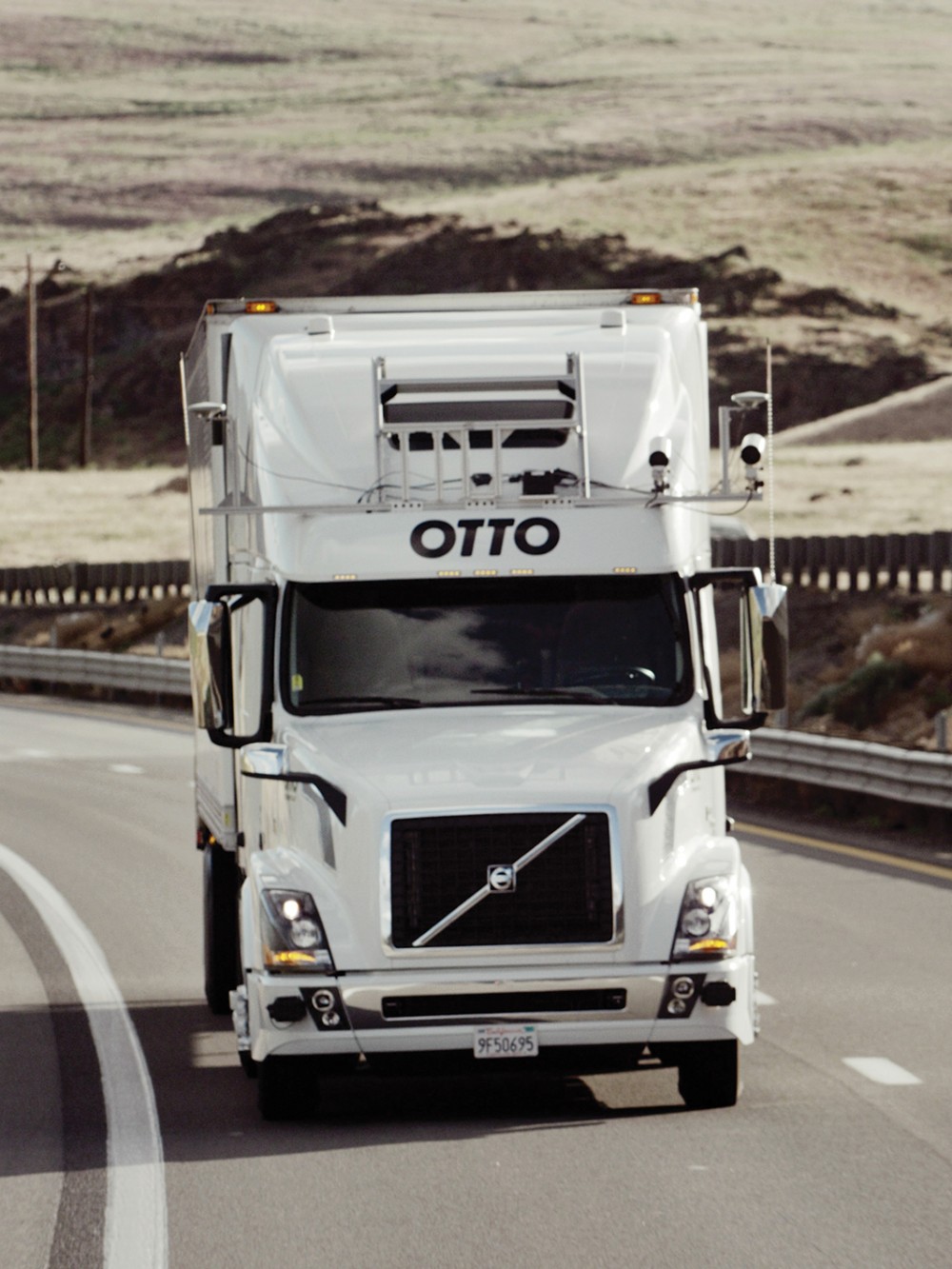Self-Driving Trucks

Tractor-trailers without a human at the wheel will soon barrel onto highways near you. What will this mean for the nation’s 1.7 million truck drivers?
Availability: 5 to 10 years
by David H. Freedman
Roman Mugriyev was driving his long-haul 18-wheeler down a two-lane Texas highway when he saw an oncoming car drift into his lane just a few hundred feet ahead. There was a ditch to his right and more oncoming cars to his left, so there was little for him to do but hit his horn and brake. “I could hear the man who taught me to drive telling me what he always said was rule number one: ‘Don’t hurt anybody,’” Mugriyev recalls.
But it wasn’t going to work out that way. The errant car collided with the front of Mugriyev’s truck. It shattered his front axle, and he struggled to keep his truck and the wrecked car now fused to it from hitting anyone else as it barreled down the road. After Mugriyev finally came to a stop, he learned that the woman driving the car had been killed in the collision.
Could a computer have done better at the wheel? Or would it have done worse?
This story is part of our March/April 2017 Issue
See the rest of the issue
Subscribe
We will probably find out in the next few years, because multiple companies are now testing self-driving trucks. Although many technical problems are still unresolved, proponents claim that self-driving trucks will be safer and less costly. “This system often drives better than I do,” says Greg Murphy, who’s been a professional truck driver for 40 years. He now serves as a safety backup driver during tests of self-driving trucks by Otto, a San Francisco company that outfits trucks with the equipment needed to drive themselves.
h
At first glance, the opportunities and challenges posed by self-driving trucks might seem to merely echo those associated with self-driving cars. But trucks aren’t just long cars. For one thing, the economic rationale for self-driving trucks might be even stronger than the one for driverless cars. Autonomous trucks can coördinate their movements to platoon closely together over long stretches of highway, cutting down on wind drag and saving on fuel. And letting the truck drive itself part of the time figures to help truckers complete their routes sooner.
But the technological obstacles facing autonomous trucks are higher than the ones for self-driving cars. Otto and other companies will need to demonstrate that sensors and code can match the situational awareness of a professional trucker—skills honed by years of experience and training in piloting an easily destabilized juggernaut, with the momentum of 25 Honda Accords, in the face of confusing road hazards, poor surface conditions, and unpredictable car drivers.
And perhaps most important, if self-driving trucks do take hold, they figure to be more controversial than self-driving cars. At a time when our politics and economy are already being upended by the threats that automation poses to jobs (see “The Relentless Pace of Automation”), self-driving trucks will affect an enormous number of blue-collar workers. There are 1.7 million trucking jobs in the U.S., according to the Bureau of Labor Statistics. Technology is unlikely to replace truckers entirely anytime soon. But it will almost certainly alter the nature of the job, and not necessarily in ways that all would welcome.
Hello Friends, How Are You
Thank You Friend nice To Meet You
the Best And amazing.
Nice To Meet You All #steemians
My Name Ary, Account name @rizal.aceh Am Coming From Aceh Sumatra National Liberation Front (ASNLF)
I Say Welcome And Happy To You Here #steemit or#eSteem.
Vote @good-karma As Our Witness.
Do not Forget Follow Me Also @rizal.aceh
I would like to express my gratitude.